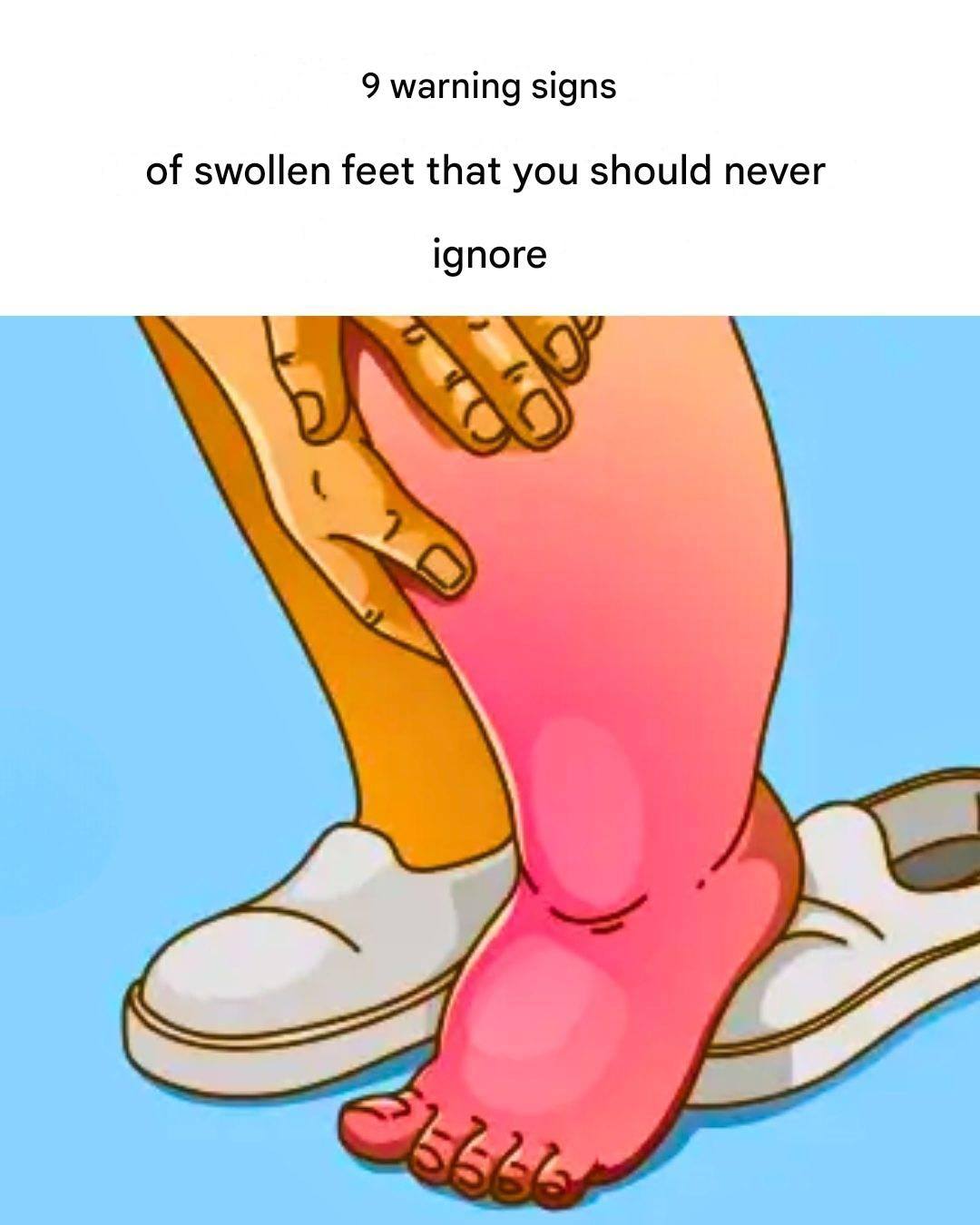⚠️ When Swollen Feet Could Signal a Serious Problem
If swelling occurs regularly, worsens over time, or comes with other troubling symptoms, it may be a sign of underlying conditions such as fluid‑balance disorders, circulation problems, or organ issues. Some of the more concerning causes:
1. Circulation Issues — chronic venous insufficiency & Vein Problems
If veins in the legs fail to pump blood properly back to the heart, blood and fluid may pool — leading to persistent swelling, heaviness in the legs, discoloration, or varicose veins. Mayo Clinic+2Mount Sinai Health System+2
2. Deep vein thrombosis (DVT) — Blood Clot in Leg
Sudden swelling in one leg — especially if painful, warm, red, or accompanied by leg pain — may indicate a blood clot, which is a medical emergency. Mayo Clinic+2shadygrovepodiatry.com+2
3. Heart Problems — congestive heart failure
When the heart cannot pump efficiently, blood can back‑up in the veins, causing fluid leakage into tissues — often showing up as swollen feet or ankles. Mayo Clinic+1
4. Kidney Problems & Fluid Retention
Diseases that impair kidney function can prevent excess fluid from leaving the body — leading to swelling, sometimes noticeable in the legs, feet, or even around the eyes. Mayo Clinic+2apfootandankle.com+2
5. Liver Disease or Low Protein Levels
Liver conditions (or conditions causing low blood proteins) can disrupt fluid balance — causing fluid buildup in tissues, including feet, legs, or even abdomen. MedlinePlus+1
6. Lymphatic System Problems (lymphedema)
If lymph vessels are damaged or obstructed, fluid drainage is impaired — often causing chronic swelling in limbs. Wikipédia+1
7. Medications — Some Drugs Cause Fluid Retention
Certain medications (e.g., some blood pressure meds, steroids, hormonal treatments) can lead to swelling as a side effect. Mayo Clinic+1
8. Obesity or Excess Weight
Carrying extra weight increases pressure on veins, reducing their ability to circulate blood — often contributing to chronic swelling. MedlinePlus+1
9. Underlying Chronic Conditions (Kidney, Heart, Liver, Vascular)
If swelling keeps coming back or remains even after rest, it may indicate major organ issues requiring medical evaluation and treatment. Mayo Clinic+2advfootandankle.com+2
🩺 When to See a Doctor — Red Flags You Shouldn’t Ignore
Seek medical help if swelling of feet/ankles is accompanied by:
-
Sudden swelling in one leg — especially if painful, red or warm (possible DVT). shadygrovepodiatry.com+1
-
Swelling along with shortness of breath, chest pain, rapid weight gain or fatigue — possible heart failure or pulmonary fluid buildup. Mayo Clinic+1
-
Persistent swelling that doesn’t improve with elevation, rest, reduced salt, or movement.
-
Skin color changes, tight/shiny skin, skin that pits after pressing (indicative of fluid buildup), or ulcers/sores that heal slowly. MedlinePlus+1
-
Swelling along with other symptoms: swelling elsewhere (abdomen, hands), cough, urinary changes, or signs of liver/kidney problem.
🧰 What You Can Do at Home — Helpful Habits & Preventive Measures
If swelling seems mild or is likely from lifestyle, you can try:
-
Elevating your legs above heart level when resting or sleeping. Mount Sinai Health System+1
-
Avoid prolonged sitting or standing — try to move or walk regularly. nhs.uk+1
-
Reduce salt intake — lower sodium helps reduce fluid retention. British Heart Foundation+1
-
Wear compression socks or supportive stockings — helpful if you stand or sit long periods. Mount Sinai Health System+1
-
Stay active — light exercise, leg movements, walking — to help improve circulation and fluid drainage. Mount Sinai Health System+1
-
Stay hydrated, maintain healthy weight — both support good circulation and fluid balance. MedlinePlus+1
🧠 Bottom Line — Don’t Ignore Unusual Swelling
Swollen feet or ankles are common. Sometimes it’s just a hot day, too much salt, or being on your feet all day. Often, it goes away quickly. But persistent, one-sided, or worsening swelling — especially with other symptoms — should not be ignored.
Your body may be signaling deeper issues: from circulation problems and vein health to kidney, heart or liver disease. Paying attention early — and seeking medical advice when needed — can help catch problems before they escalate.
If swelling lasts for days, becomes painful, or comes with shortness of breath, redness, or skin changes — it’s time to talk to a doctor.

